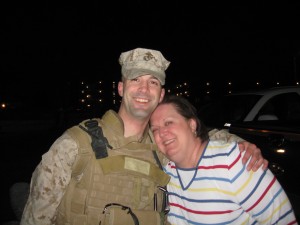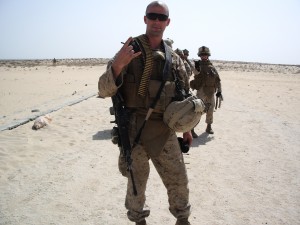Our buddy Andrew Exum has a piece out today with The New Republic entitled No Place to Hide. In it, he defends the Obama administration’s “renunciation of traditional counter-terror strategies.” More specifically:
When the Obama administration announced the results of its review of Afghanistan and Pakistan policies on Friday, reporters quizzing the review’s authors seemed confused. They wondered whether the recommendations announced by the president amounted to an abandonment or endorsement of the kind of population-centric counter-insurgency strategy employed in Iraq in 2007. Were we embracing a more limited counter-terror mission? Or were we committing ourselves more fully to nation-building?
The aims of the strategy are quite modest: to deny transnational terror groups the ability to use physical space to plan and prepare for attacks on the United States in the way that al-Qaeda used Afghanistan in the years before the 9/11 attacks. And the central problem of the post-Cold War era is that these staging grounds are often in ungoverned spaces like the Pashtun belt straddling the Afghanistan-Pakistan border. The solution to this problem in those countries is improved governance from Kabul and Islamabad, respectively, which leads us to pursuing lines of operation quite unlike those most normally associated with the art of war–such as improving centralized governance, coordinating economic development, and providing essential services to the peoples of southern Afghanistan and western Pakistan. The new Obama strategy for Afghanistan and Pakistan is thus better described as a “counter-haven” strategy then a counter-terrorism strategy. (I must credit a conversation I had with counter-insurgency theorist-practitioner David Kilcullen on Friday for that particular turn of phrase.)
So the plan announced by the Obama administration is actually a renunciation of traditional counter-terror strategies–which have employed special operations raids, drone strikes, and bombing campaigns to deter or reduce the capacity of transnational terror groups. In the administration’s strategy is the admission that solely “kinetic” means–blowing things up and killing people–cannot be relied upon to end the threat from terror groups in Afghanistan and Pakistan.
I won’t repeat all of his prose here, but Exum launches into an interesting missive on the issue of Cartesian space versus virtual space.
The White House strategy, though, betrays an obsession with physical space at the expense of virtual space. This fixation very much reflects a generational divide among the scholars and policy-makers who focus on terrorism. Younger scholars such as Will McCants (now at the Department of Defense) and Thomas Hegghammer–in addition to being much more likely to actually be able to speak and read the relevant languages (Arabic and Urdu)–are “digital natives” rather than “digital immigrants” (to use the labels preferred by the counter-insurgency scholar Thomas Rid): They do not need to have the explosive potential of the internet explained to them, and McCants and Hegghammer especially have individually spent hundreds of hours on the more popular jihadi chatrooms to gather data about the debates and spread of information that is taking place in the virtual world
Well, Exum seems to be saying that we must be prepared to take on the enemy anywhere for this to work, and I tend to agree (and for that reason believe that the global counterinsurgency in which we are engaged is underfunded and under-resourced). I also believe that we should be prepared to confront the conventional enemies, which is why rather than throwing several trillion dollars down the toilet, we should be funding the U.S. military.
But anywhere is still somewhere that is located in Cartesian space. I’m not impressed with the alleged global power of the Internet jihadists, and most of them are still jihadist wannabes in cyberspace. Let them pick up a rifle and do duty, but until they do, we are worrying about the wrong thing. Have your IT experts, but what we really need are boots on the ground.
Our very good friend Professor Gian Gentile gives Exum nice props, and is perhaps being too gracious. I’m not that gracious, something quite endemic to my nature, I’m sure. Exum is playing make believe about the Obama administration renunciation of the counter-terror strategy and HVT campaign. Only recently was it announced that the UAV strikes would expand to Quetta.
Now, I’m not against the strikes for the typical reasons: they kill innocents, they add to the rolls of the insurgency, etc. In fact, I’m not against them at all. But simply put, this strategy won’t work. Neither will this strategy work when applied with SOF troopers who swoop into an area, kill a HVT, and then withdraw.
Stupid in the superlative, and we have discussed it before. Have your airmen that can use a Milstar uplink to guide a JDAM to target by painting it with a laser; have your SEALs who can attach underwater demolitions. Very well. The ground is controlled by infantry, and if we win the campaign in Afghanistan it will be because the load is borne on the backs of the infantry and Cavalry. They can converse with the population, they can gain intelligence, they can deliver logistics, they can fight the enemy, and they can fast-rope into an area and kill or capture the HVTs if that becomes necessary.
I have had very unsatisfactory e-mail exchanges with Exum on this issue, and while Exum continues to defend the Obama adminstration and its alleged repudiation of the HVT strategy, he then turns around and defends the use of SOF to kill or capture HVT.
We must fish or cut bait in Afghanistan. We must not go in half way. We must decide if we support the campaign or not. If we support it, then we need to resource and finance it. Send in the Cavalry and infantry. Prepare for proper logistics. If not, then let’s withdraw and live to fight another day, while protecting and training the sons of America. They aren’t toys or pawn pieces with which to enact an administration’s damn foreign policy. They are men, made in God’s image, your neighbors and loved ones.







